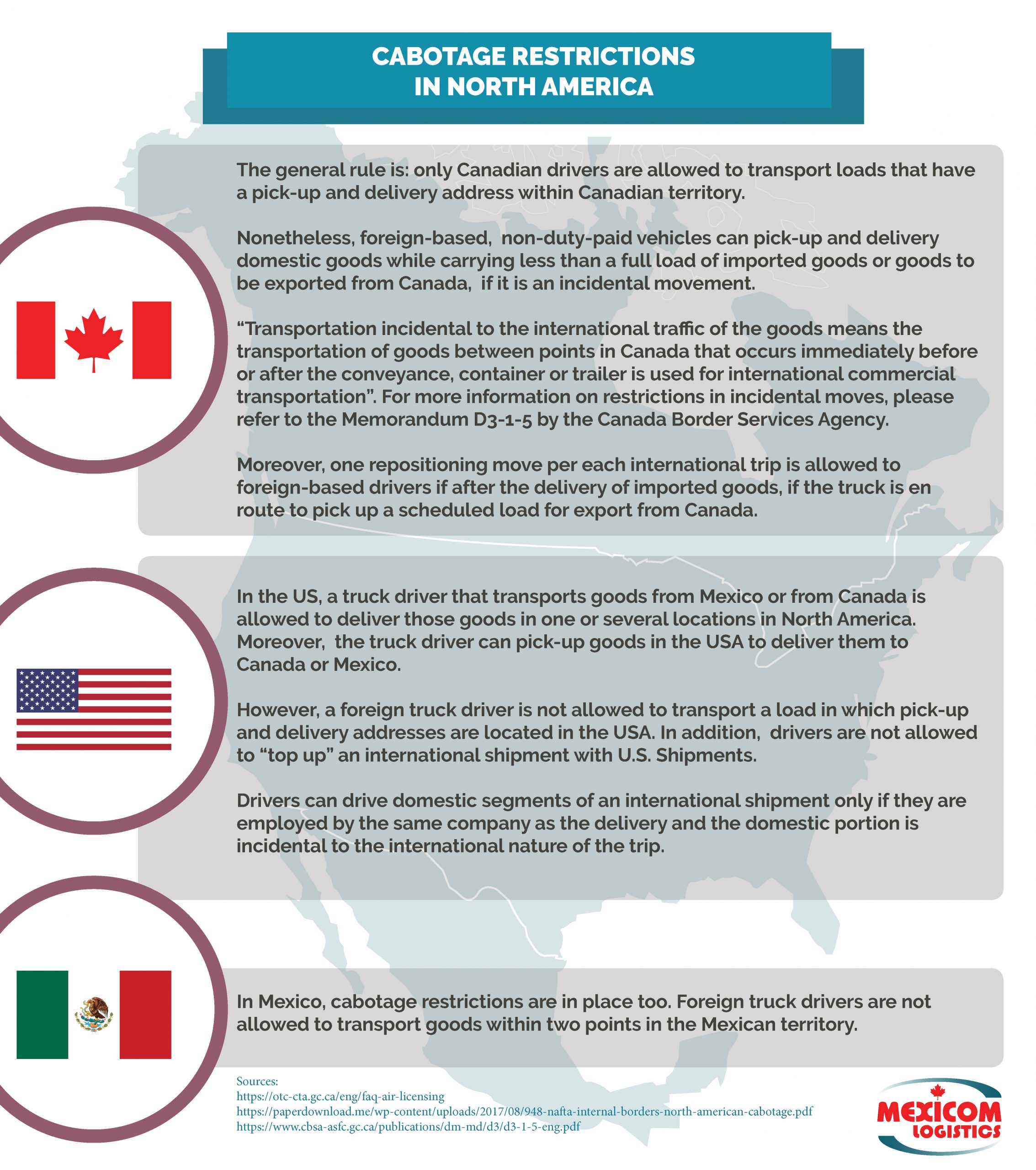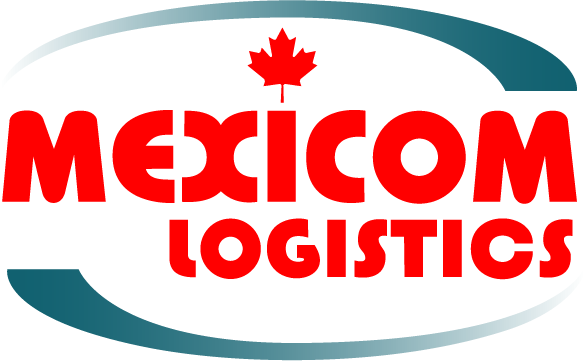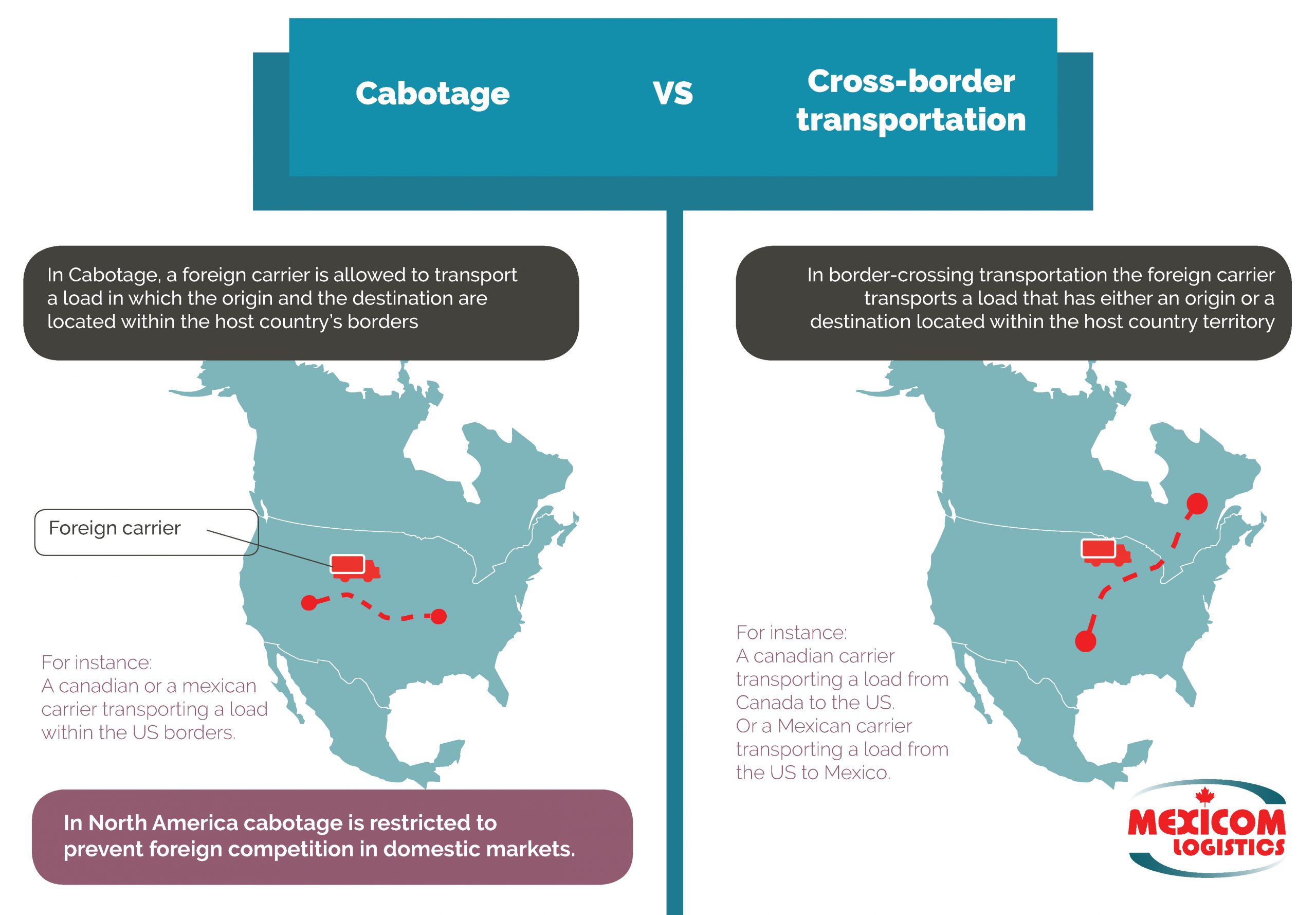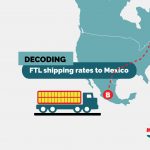Cabotage and truck transport in North America
Cabotage in North America
Cabotage is the provision of transportation service between two points within a country by a company registered in another country. Although some exemptions exist, in general, in North America cabotage is restricted to prevent foreign competition in domestic markets. Those restrictions apply to every transportation mode at different levels, however, in this post, we will focus only on cabotage for truck transport.

Cabotage restrictions in the US
In the US, a truck driver that transports goods from Mexico or from Canada is allowed to deliver those goods in one or several locations in North America. Moreover, the truck driver can pick-up goods in the USA to deliver them to Canada or Mexico.
However, a foreign truck driver is not allowed to transport a load in which pick-up and delivery addresses are located in the USA. In addition, drivers are not allowed to “top up” an international shipment with U.S. Shipments.
Drivers can drive domestic segments of an international shipment only if they are employed by the same company as the delivery and the domestic portion is incidental to the international nature of the trip.
For more information, refer to the Guidelines for compliance of CMV and CMV drivers engaged in cross-border traffic.
Cabotage restrictions in Canada
In Canada, the general rule is: only Canadian drivers are allowed to transport loads that have a pick-up and delivery address within Canadian territory.
Nonetheless, foreign-based, non-duty-paid vehicles can pick-up and delivery domestic goods while carrying less than a full load of imported goods or goods to be exported from Canada, if it is an incidental movement.
“Transportation incidental to the international traffic of the goods means the transportation of goods between points in Canada that occurs immediately before or after the conveyance, container or trailer is used for international commercial transportation”. For more information on restrictions in incidental moves, please refer to the Memorandum D3-1-5 by the Canada Border Services Agency.
Moreover, one repositioning move per each international trip is allowed to foreign-based drivers if after the delivery of imported goods, if the truck is en route to pick up a scheduled load for export from Canada.
Cabotage restrictions in Mexico
In Mexico, cabotage restrictions are in place too. Foreign truck drivers are not allowed to transport goods within two points in the Mexican territory.
Cabotage vs Cross-border transportation
Cabotage is different than cross-border international transportation. In cabotage, a foreign carrier is allowed to transport a load in which the origin and the destination are located within the host country’s borders, while in border-crossing transportation the foreign carrier transports a load that has either an origin or a destination located within the host country territory.
Impacts of cabotage restrictions in North America
- Domestic markets protection
- Empty backhauls
On the one hand, cabotage restrictions help to protect the domestic trucking industry from foreign competition. Since the truck driver’s minimum wages vary across North American countries, cabotage restrictions help to protect truck drivers that work for higher wages. For example, cabotage restrictions prevent Mexican truck drivers, that are able to work the same route for less money, from providing trucking services within the USA territory, where truck drivers’ minimum wages are higher. That way, American drivers are protected from lower-waged competitors.
On the other hand, cabotage restrictions lead to empty backhauls. All truck transport trips are round trips, meaning that when a truck makes a trip to go somewhere, it necessarily has to make another trip to come back. Therefore, fronthauls and backhauls involve joint costs. If, for example, a Mexican carrier can not find a backhaul load to go back to Mexico, it must return empty, which has economical and environmental repercussions. This problem ads on to the imbalance in transportation flows, in which there is a higher demand for northbound loads than for southbound loads.
Sources:
https://otc-cta.gc.ca/eng/faq-air-licensing
Click to access 948-nafta-internal-borders-north-american-cabotage.pdf











